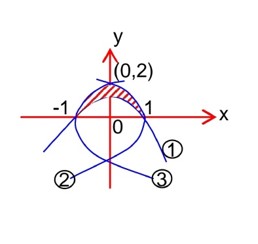Ncert Solutions Maths class 12th
Get insights from 2.5k questions on Ncert Solutions Maths class 12th, answered by students, alumni, and experts. You may also ask and answer any question you like about Ncert Solutions Maths class 12th
Follow Ask QuestionQuestions
Discussions
Active Users
Followers
New answer posted
a month agoContributor-Level 10
We can convert 50! In terms of prime factor: & using the greatest integer function.
n
The maximum value of n is 22.
New answer posted
a month agoContributor-Level 10
B is a matrix of same order with entries from {1,2,3,4,5}. and satisfying AB = BA.
there exist only 5 distinct entries in the matrix B so that possible case = 55 = 3125
New answer posted
a month agoContributor-Level 10

g(x) is continuous every where but not differentiable
at x = -4, -2, 2 and 4
New answer posted
a month agoContributor-Level 10
All entries different which can be selected as 

Let be such matrix
|A| = ad – bc
Now | A| = 0 -> ad – bc = 0 cases
1, 6 3, 2 2 * 2 * 2
&nb
New answer posted
a month agoContributor-Level 10
System of equations can be written as
Again
The system will have no solution for
New answer posted
a month agoContributor-Level 10
& are two planes the direction ratio of the line of intersection of then is collinear to
Any point on the line in given by x – y = 2
& 2x + y = 2
Taking an Exam? Selecting a College?
Get authentic answers from experts, students and alumni that you won't find anywhere else
Sign Up on ShikshaOn Shiksha, get access to
- 65k Colleges
- 1.2k Exams
- 688k Reviews
- 1800k Answers


